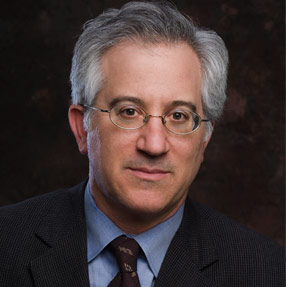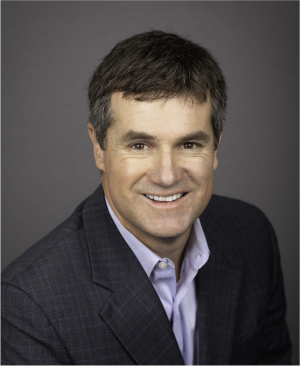Rosacea - Stick to Your Treatment - Health Tips
Get practical tips regarding Rosacea - Stick to Your Treatment to help you prepare for your appointments and manage your care from home.

While there is no known cure for rosacea, a combination of treatments can often be used to effectively diminish its appearance. Rosacea treatment options include individualized skin care, topical medications (such as azelaic acid, metronidazole), oral antibiotics (such as doxycycline, Oracea®), and laser light therapies.
Laser treatment is usually the most effective treatment option for reducing facial redness. flushing and broken capillaries (telangiectasias). The results of laser treatment for rosacea are long lasting, but periodic treatments are useful to maintain best results.
I have found that what I call Pulsed Light Rejuvenation is an effective treatment for rosacea. I use a combination of intense pulsed light (IPL) and two additional laser wavelengths (532 nm, 940 nm) using the VariLite laser. It can reduce redness, flushing, facial veins and may help reduce rosacea flares. This treatment also reduces splotchy brown sun damage and stimulates some collage production, which improves skin texture.
During the procedure, the laser emits wavelengths of light that target tiny blood vessels just under the skin. Heat from the laser’s energy builds in the vessels, causing them to disintegrate.
When rhinophyma (rosacea subtype 3) occurs, the nose gets larger and bumpy. Rhinophyma can be treated with CO2 laser resurfacing and/or surgery to remove unwanted tissue and reshape the nose.

Rosacea, a lifelong and potentially progressive disorder, can be broken down into three main types:
1. ETR (Erythro-Telangiectatic Rosacea) or subtype 1 – Red, blushing, flushing rosacea, with lots of veins, and 'broken capillaries'.
2. PPR (Papulo-Pustular Rosacea) or subtype 2 – Multiple red acne-like bumps and pimples.
3. Rhinophyma or Subtype 3 – Enlarged 'W.C. Fields' like nose.
ETR may be the initial phase of many people's rosacea. Rosacea patients' faces are red, and flush easily from various stimuli such as alcohol, caffeine, or temperature changes. Their skin is often quite sensitive, so using sensitive skin products is important. Sun protection is key to prevent long term progression of this stage, which may progress to PPR. Coverup makeups can be used, and the newer mineral makeups seem to work well and are non-irritating. Topical medicines are generally ineffective for this stage for rosacea.
Generally for ETR, the best treatment is the Pulsed Dye Laser or IPL. These lasers and light sources target the blood vessels that are the cause of this condition. With treatment, we see less redness, flushing, removal of unsightly veins, less sensitive skin, and less potential to break out in pimples. Generally 3-4 treatments are sufficient for excellent results.
Most of the medicines we use for rosacea work on PPR (the type that causes bumps and pustules). These include topicals applied to the skin, such as metronidazole (MetroGel®) and azelaic acid (Finacea®), and oral medicines such as doxcycycline (Oracea®) and minocycline. They are very effective in decreasing the red pimples and bumps. Long-term treatment for control is the rule, and flares tend to recur as medicines are weaned. Again, treatment with a pulsed dye laser may improve PPR and decrease the frequency of flares.
Rhinophyma is generally only seen in men, and occurs much less commonly today than a few generations ago. Treatment can be with ablative lasers such as the CO2 laser, or with an electrocautery unit. With treatment, many patients find improvement in their sleep and less snoring, as well as an improved cosmetic appearance.
Many people with rosacea may first experience the facial redness of rosacea subtype 1 called "Erythrotelangiectatic rosacea".
The causes the face to become red, flush easily from various stimuli such as alcohol, caffeine or temperature changes. Sun protection is key to prevent long term progression of this stage, which may progress. Coverup makeups can be used to hide the redness, and the newer mineral makeups seem to work well and are non-irritating.
Pulsed Dye Laser (PDL) or intense pulsed light (IPL) are the best treatment options for rosacea subtype 1. These lasers and light sources target the blood vessels that are the cause of this condition. Generally 3-4 treatments are sufficient for excellent results.
Most of the medications prescribed for rosacea treat the pimples and bumps of rosacea that occur with subtype 2, called "papulopustular rosacea". Topical medications (metronidazole and azelaic acid) and oral medicines, such as doxcycycline (Oracea) and minocycline, are very effective in decreasing the red pimples and bumps.
Long-term use of rosacea medications is the rule, and flares tend to recur as rosacea medications are weaned. Pulsed dye laser treatment may improve rosacea subtype 2 symptoms and decrease the frequency of flares.
The swollen nose of "Rhinophyma", seen with subytpe 3, generally only occurs with men and less commonly than a few generations ago.
Treatment of rhinophyma can be with ablative lasers such as the CO2 laser, or with an electrocautery unit. Many patients find improvement in their sleep and less snoring, as well as a improved cosmetic appearance, with treatment.
Be sure to consult with your board-certified dermatologist or laser specialist to determine what treatments might be best for your type of rosacea.

Rosacea is a common skin disorder that causes redness and acne-like bumps on the face. There are four subtypes of rosacea that describe the changes to the skin. Rosacea subtype 1 describes the flushing and facial redness that may appear. Rosacea subtype 2 (papulopustular rosacea) describes the bumps and pimples that may develop. People with rosacea can have more than one rosacea subtype at the same time.
Early rosacea treatment is important to prevent rosacea symptoms from worsening. Options include topical medications (ex. azelaic acid, metronidazole) and oral medications (ex. low-dose doxycycline). Laser is sometimes used to control the redness caused by rosacea. Your dermatologist will recommend a treatment plan based on the subtype of rosacea present and its severity. It may be helpful to use a rosacea diary to track your symptoms and identify your personal triggers. Avoiding these triggers is a key step to keeping rosacea under control.